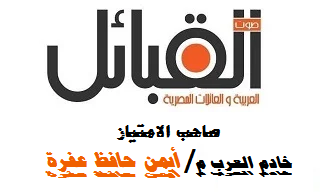حاملى القرابين

حاملى القرابين
حيث تم اكتشاف هذه التحفة الفنية للنحت على الخشب المصري في غرفة مخفية على جانب الممر
المؤدي إلى القبر المحفور في الصخور للقائد الملكي مكت رع .
الذي بدأ حياته المهنية تحت حكم الملك نب حتب رع منتوحتب الثاني من الأسرة 11
هكذا استمر في خدمة الملوك المتعاقبين. السنوات الأولى من الأسرة الثانية عشرة.
بينما أحيط هذا التمثال بمجموعة من اثنين وعشرين نموذجًا من الحدائق وورش العمل والقوارب وموكب جنازة
تم حشرهم في مساحة الغرفة الضيقة.
حاملى القرابين
و هنا تمشي المرأة إلى الأمام بساقها اليسرى وتحمل على رأسها سلة مليئة بقطع اللحم.
في يدها اليمنى تمسك بطة حية من جناحيها.
بينما تجد الأيقونية الشخصية معروفة جيداً من نقوش الدولة القديمة حيث رُسمت صفوف حاملي القرابين.
غالبًا كُتبت أسماء الأماكن بجانب هذه الأشكال التي تحددها على أنها تجسيد للعقارات
التي من شأنها أن توفر قوتًا لروح مالك المقبرة إلى الأبد.
بينما المرأة مزينة بالمجوهرات وترتدي فستانًا مزينًا بنمط من الريش ، وهو نوع الثوب الذي غالبًا ما يرتبط بالإلهات.
هكذا ، فإن هذا الرقم ورفيقه في القاهرة قد يكونان مرتبطين أيضًا بالإلهة الجنائزية إيزيس ونفتيس
اللتين غالبًا ما تُصوَّران عند أقدام ورأس التوابيت ، تحمي المتوفى.

This masterpiece of Egyptian wood carving was discovered in a hidden chamber at the side of the passage leading into the rock cut tomb of the royal chief steward Meketre,
who began his career under King Nebhepetre Mentuhotep II of Dynasty 11 and continued to serve successive kings into the early years of Dynasty 12.
this statue flanked the group of twenty two models of gardens, workshops, boats, and a funeral procession that were crammed into the chamber’s narrow space.
Striding forward with her left leg, the woman carries on her head a basket filled with cuts of meat. In her right hand she holds a live duck by its wings.
The figure’s iconography is well known from reliefs of the Old Kingdom in which rows of offering bearers were depicted.
Place names were often written beside these figures identifying them as personifications of estates that would provide sustenance for the spirit of the tomb owner in perpetuity.
The woman is richly adorned with jewelry and wears a dress decorated with a pattern of feathers, the kind of garment often associated with goddesses.
Thus, this figure and its companion in Cairo may also be associated with the funerary goddesses Isis and Nephthys who are often depicted at the foot and head of coffins, protecting the deceased.





